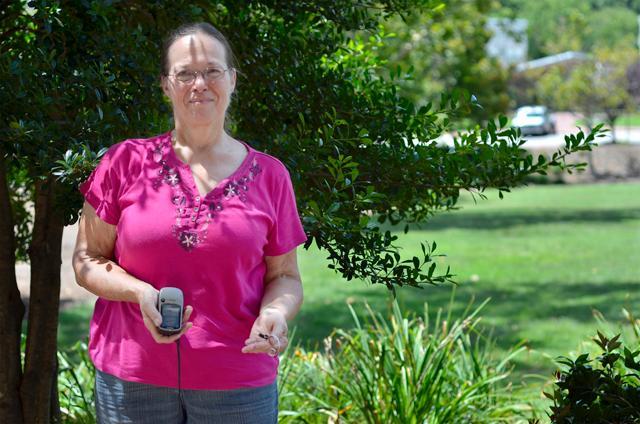Diving 110 feet underwater to find hidden treasure may seem more like the plot of an action adventure movie than a recreational activity, but for Michael and Jane Smith, a retired couple who live in Raleigh, it’s all part of their daily fun: geocaching .
Through the use of global positioning system devices, geocaching players compete in this outdoor treasure hunting game while avoiding the detection of “muggles”, a word borrowed from the “Harry Potter” franchise that refers to humans without magical powers who are oblivious to the world of wizards and witches. In geocaching, however, “muggles” refer to humans who are not aware of the geocaching activity.
“The reason behind keeping our activities discreet is to avoid the curiosity of others who don’t geocache, which could lead to vandalism,” Mr. Smith said. “Many people would discover these objects and not know what they really were for, but mess with them anyway.”
The objects, or “caches,” that geocaching players search for can be containers ranging from the size of an eraser on the tip of a pencil to the size of a large barrel. The caches usually include a a sheet of paper for the geocachers to “sign in.” Larger containers may include random treasures that may be swapped out by each new discovery of the cache’s location. These treasures can be anything, including money, McDonald’s Happy Meal Toys and trackers, which are movable geocaches. Afterwards, geocachers can log on to www.geocaching.com to record their finds and share their experiences with the community.
The Smiths have found several geocaches around N.C. State campus – an area particularly familiar to Mrs. Smith, an NCSU alumna.
According to the couple, the history of geocaching began when the U.S. government opened military-developed global positioning satellites to civilians in the early ’90s. In May of 2000, the government stopped degrading global positioning system accuracy, which allowed for much greater precision for civilians on the ground. At that time Dave Ulmer, a computer consultant, decided to test GPS’s accuracy by hiding a navigational target in the woods near Beaver Creek, Ore. He called this test “the Great American Stash Hunt” and posted it on the Internet. Since then, the stash hunt expanded to become a worldwide phenomenon now called geocaching.
Geocaching has since spread throughout the world, where avid players who enjoy travelling for fun can use geocaching as a free and easy way to tour new places and make new discoveries as they search for their geocache’s destination.
“In Italy, there was a lady from Austria at the Coliseum who was a fellow geocacher,” Mr. Smith said. “She beat us to the cache. We saw her trying to reach under her seat discreetly while watching out for muggles.”
Geocaches are not only all over the world, but can also be anything in the world as well. A type of geocache that is not in a container is called a virtual cache, where the actual location is the discovery.
“While we were in Hawaii we found this cache described online, which was a rock formation where water shoots up to make a shape,” Mrs. Smith said. “People who create these caches just find interesting things like these they want to show others.”
To make this treasure hunting game more challenging, some geocachers who hide the geocaches offer hints in the form of puzzles that may take more than just looking around an area to find the geocache. For instance, at the N.C. State College of Natural Resources Building, the red wolf statue gives a hint to where a geocache is located. In the “hints” section online that describes this hunt, the geocacher much count the number of R’s located on a sign in front of the wolf, then multiply that by a certain number before coming up with the latitude for the location.
Those interested in the activity should be aware of the “terrain” evaluation of the activity, which marks the level of danger for any specific hunt, Mr. Smith said.
“The higher the level of terrain, the more likely you are to slip or fall,” Mr. Smith said. ”This usually goes for areas like up in the mountains.”
For new students who are unfamiliar with the campus who would like to get to know it better, geocaching is a way to discover various buildings and sites that N.C. State has to offer. There are more than 20 different geocaches currently hidden in various parts of main campus, and more to be discovered if one plans to search Centennial Campus as well.









